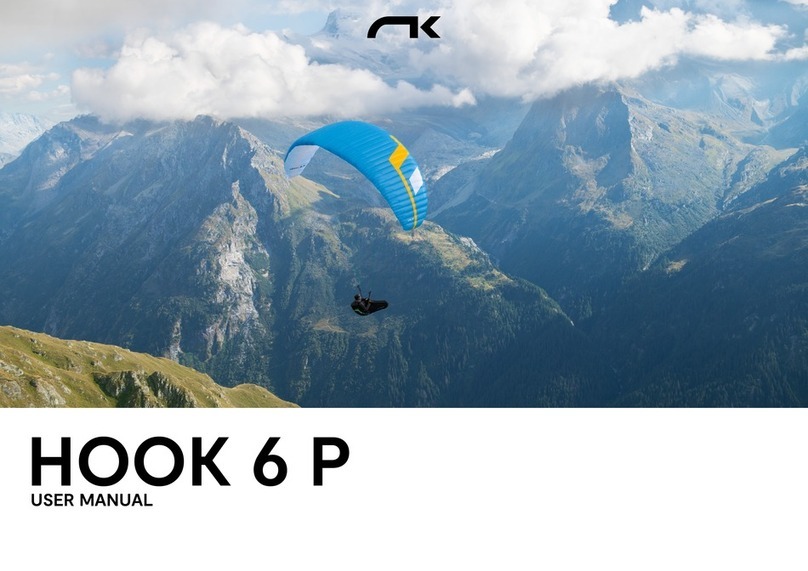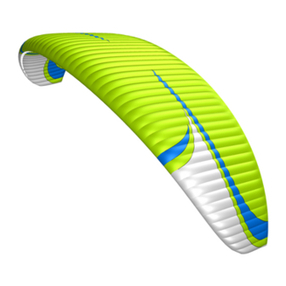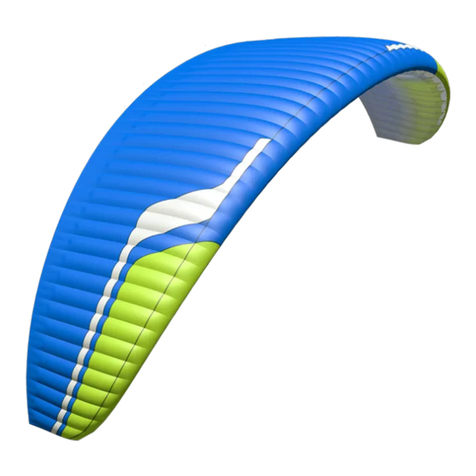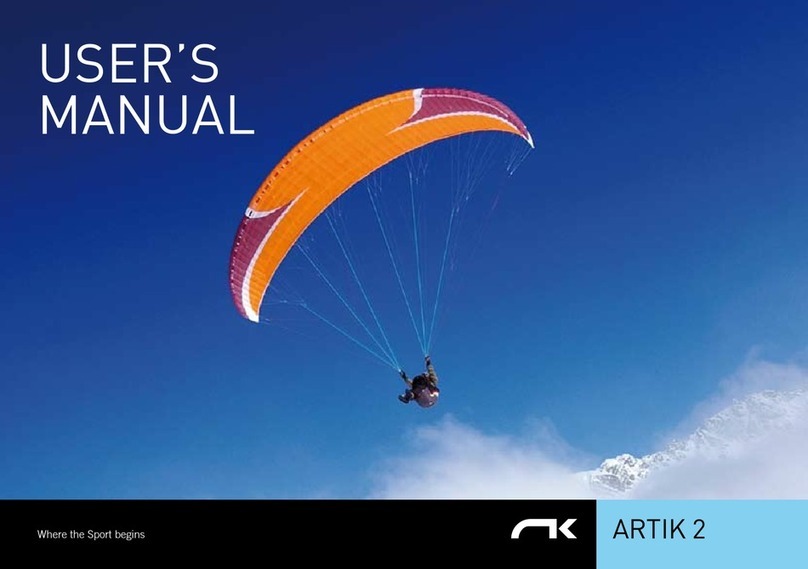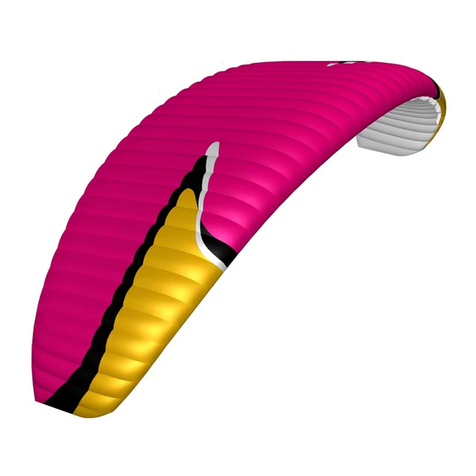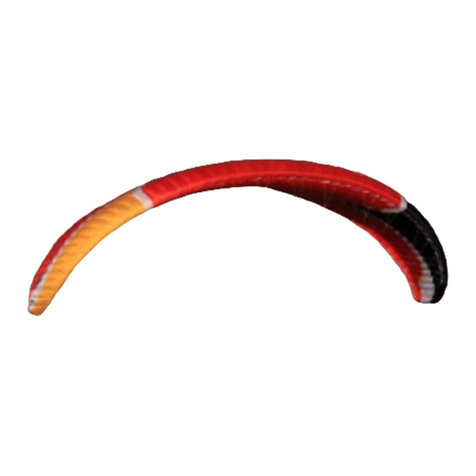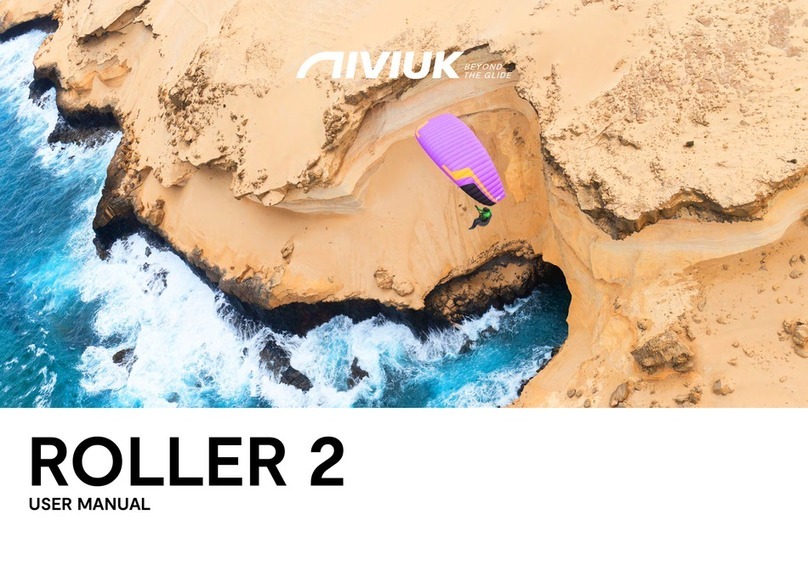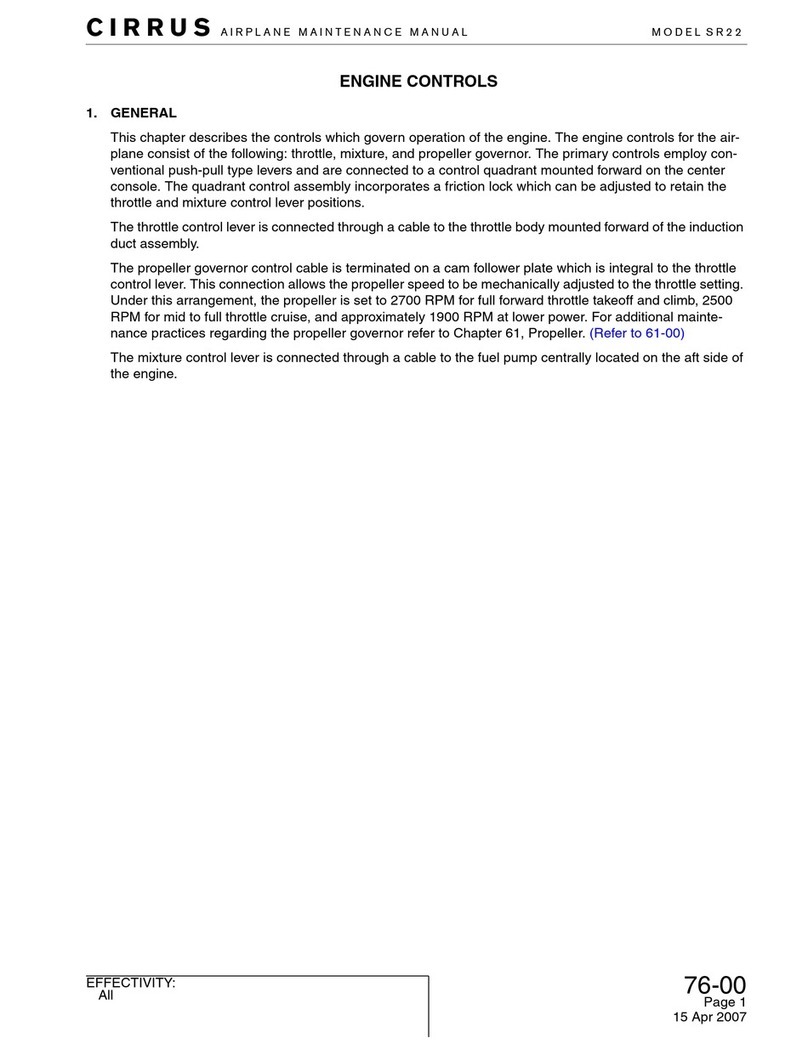10
weather conditions, hence enabling the pilot to take advantage of its stability
for greater piloting efciency. It reacts admirably in passive ight mode, thus
offering a high level of safety in turbulent conditions. Nonetheless, the pilot
always has to steer the wing and adapt his/her technique to the prevailing
weather conditions as he/she is the ultimate safety factor.
We recommend active piloting, the timely necessary ne adjustments
to keep the wing in control. The pilot should stop braking to regain the
necessary air speed after a correction is made.
Do not maintain any correction using the toggles for longer than necessary
or it would cause the wing to enter a dangerous ying conguration. Make
prompt, precise yaw, pitch and roll adjustments when needed to re-
establish normal air speed.
4.2 POSSIBLE CONFIGURATIONS
To become familiar with those manoeuvres, we recommend practicing
within the environment of a competent outt. The pilot will have to
constantly adapt his toggle impute relative to the load carried by the wing,
and avoid over-steering.
It is important to realize that from one size to another, behaviour can vary,
even under the same size wing: depending on minimum or maximum
loading, the wing’s reaction can vary.
In the report, you will nd all the necessary information explaining how
your new wing reacts with each test manoeuvres.
Having this information available is crucial, and will help you better
understand how your wing will behave in real time ying situations to
maximize your safety.
Asymmetrical collapse
In spite of the ARTIK P’s prole stability, strong turbulent air may cause
the wing to collapse asymmetrically if the pilot was unable to predict
the glider’s reactions in specic circumstances. When the wing is about
to experience an asymmetric collapse the brake lines will transmit a
loss of pressure to then be transferred to the pilot via the harness. To
prevent the collapse from happening, pull the toggle corresponding to the
compromised side of the wing. It will increase the incidence of the wing
(angle of attack). If the collapse does happen the ARTIK P will not react
violently, the turning tendency is gradual and easily controlled. Weight-shift
toward the ying and opposite side of the collapse to keep the wing on
ying straight while applying a light brake pressure to that side if necessary
to slow it down. The collapsed side of the wing should then recover
and reopen by itself. If it does not, then pull the brake line toggle of the
collapsed side decisively and quickly all the way down before bringing
it back up immediately. You may have to repeat this pumping action to
provoke the re-opening of the deated glider side. Do not over-brake and
slow down the ying side of the wing (risk of a stall for having too high an
angle of attack). Once the collapsed side reopens, re-centre your body
under the wing to regain the default ying speed.
Symmetrical collapse
In normal ying conditions and due to the ARTIK P’s design, asymmetrical
collapses are unlikely to happen. The wing’s prole has great buffering
abilities to deal with extreme incidence changes. A symmetrical collapse
may occur in strong turbulent conditions, entering or exiting powerful
thermals or when lacking experience using the accelerator/speed-bar with
untimely inadequate input. Symmetrical collapses usually re-inate without
the glider turning, but a symmetrically applied quick braking action with a
quick deep pump will accelerate the re-ination if necessary. Release the
brake lines immediately to return to default glider air speed.
Negative spin
A negative spin does not conform to the ARTIK P’s normal ight behaviour.
Certain circumstances however, may provoke this conguration such as
trying to turn when ying at very low air speed deep in the brakes, and
applying even more toggle pressure on one side). It is not easy to give any
